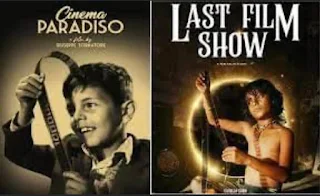Director: Shyam Benegal
 |
| imdb.com/title/tt0083575/ |
This movie serves as an eye-opener on the political changes in West Bengal. After the East India Company handed over administration of its prized colony to the British Crown in 1858, following the Sepoy Rebellion (also known as the First War of Independence), Calcutta was designated as the Capital of India. The crown built many learning institutions to help the natives aid in the British Raj administration.
The British realised their mistake in 1905 when Lord Curzon partitioned the region of Bengal into two parts, the West and East, which later became the basis of the Partition of India. The erudite society was also very argumentative and resistant to the colonial government.
This combative demeanour continued with their son of the soil, Subhash Chandra Bose, who was unceremoniously forced to resign from the Chair of the Indian Congress party. His militant, perhaps left-leaning approach to seeking self-rule was in tune with Gandhi's, as well as the British and the INC's approaches to independence.
The post-British era saw the leftist movement remain active, particularly through academia and among disgruntled workers. The period from 1967 onwards was seen as the Communist 'golden era'. CPI-M took a stronghold on the running of the State. From 1977 through 2011, the CPI-M Left Front ruled the State. To be honest, in the first ten years, it achieved notable success in land distribution, agriculture, universal education, poverty reduction, and societal restructuring. Slowly, nepotism and misrule crept in. They were highly successful in deterring foreign investors and were primarily responsible for the relocation of many multinational industries and factories. Bengal's loss was another state's gain, e.g. Tamil Nadu. In 2011, Trinamool Congress defeated the Left Front with the support of rural Bengal.
The movie highlights the cruel transition period in rural Bengal circa late 1960s, where the poor sharecroppers are caught between the greedy landlords and the Naxalite movement. The initial arrangement was for the sharecroppers to pay a portion of their harvest as rent to the landowners. Hard times hit the sharecroppers, and they approached the landlords for loans. The illiterate peasants are cheated through one-sided agreements that they cannot read. They are instead employed as wage-earning workers. The younger ones among them head to the city, but go astray after being cheated blind.
The sharecroppers are also harassed by the Naxalite movement, which encourages them to rebel against the landlords. Amidst all this, there is the most violence, upheavals, and unending court trials that never see the light of day. The story is told in a melodramatic manner. In the parallel cinema of India, the movie portrays the plight of a poor farmer and his extended family during these trying times. It depicts the cruel turn of events for family members who migrated to the bright lights of Calcutta, only to face worse living conditions and disastrous outcomes. In the leading role, Om Puri won a National Award for his part.






_poster%20(1).jpeg)







